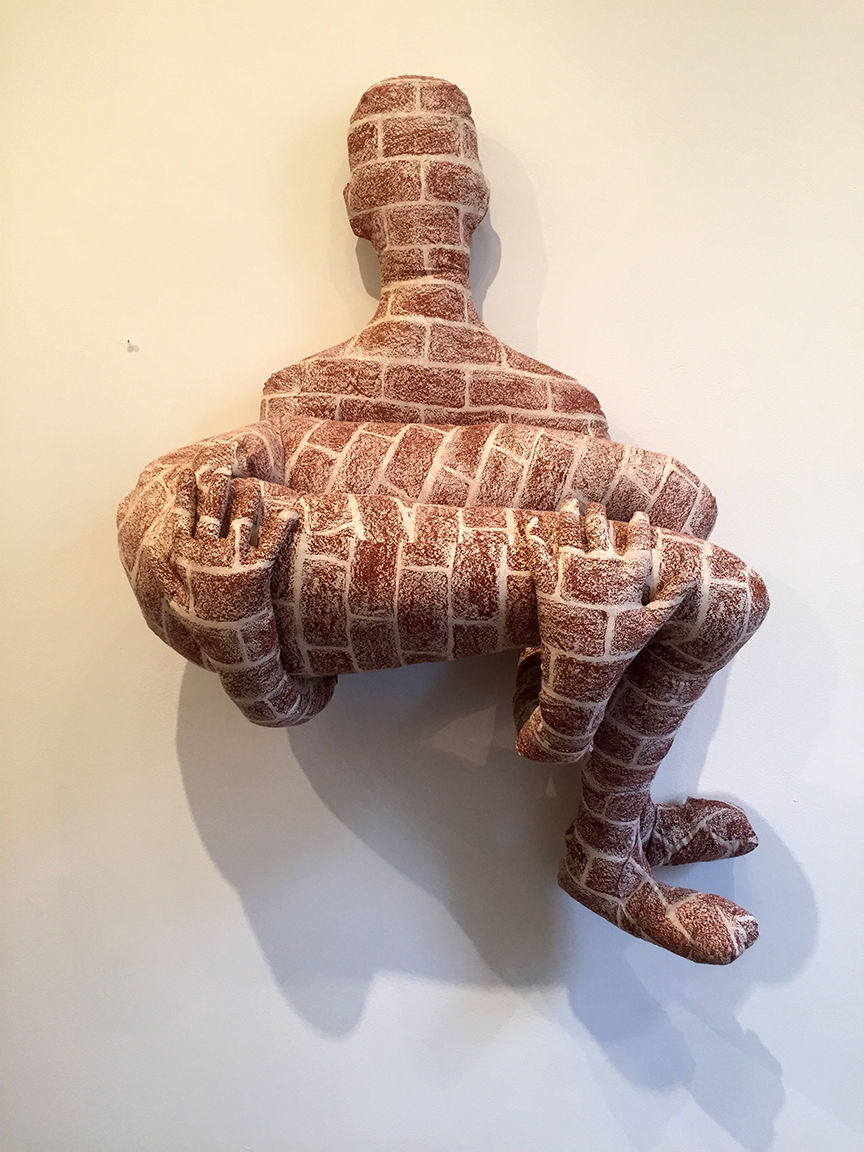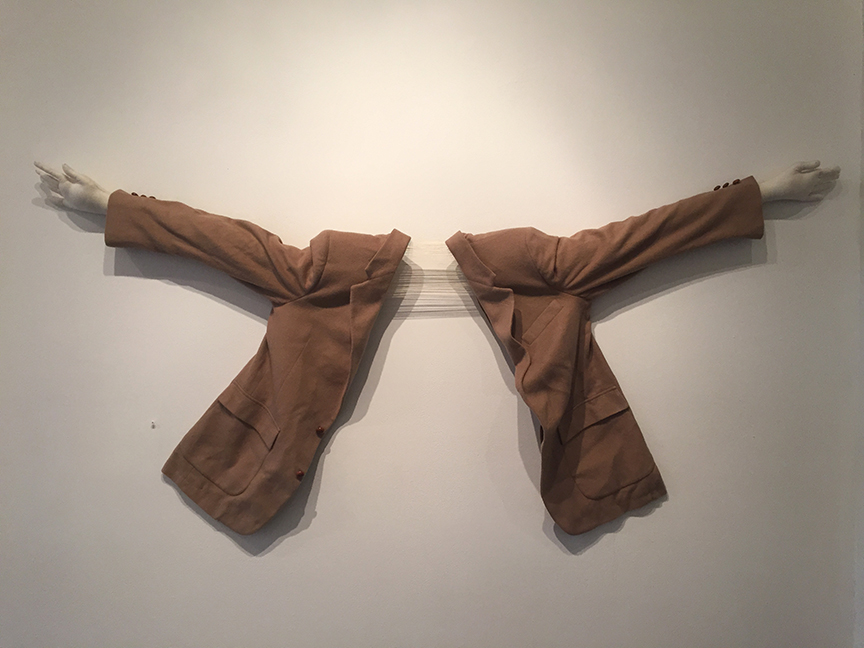
Artist Kay Healy prompts us to weave our own tales with her fragmentary figures
Mannequins and similar human likenesses have the power to snap us back to the present moment. Catching a human form out of the corner of one’s eye is often a surprise, and for a moment, these figures seem to gain life as we react to their presence. Our self-consciousness reflects what it means to be observed by a fellow person, and their motionlessness usually quickly betrays their lack of sentience.
Kay Healy is quite interested in such avatars, not only for their ability to mimic, but for their power to change and tell stories. In “What is Real” at Napoleon gallery in Philadelphia, Healy starts with the human form and augments it, in order find out how even inanimate objects, with the right posturing, can capture the imagination and tell a story. Using fabric and stuffing, and sometimes referring to outside materials like wood or brick, Healy constructs an assortment of body parts and busts for a show that is as fantastical as it is at times unnerving.

Kay Healy, “Carry.” Photo courtesy of Kay Healy.
The image of a firefighter carrying a child from a burning building or a reverent believer bringing an offering to a shrine: these actions carry significant psychic weight. But what about a man–arms extended–carrying his own legs? In “Carry,” Healy offer us not only this, but a figure whose entire body is composed of red brick and mortar. Without a leg to stand on, and paradoxically steadfast in his approach, the two halves of this man seem determined to reach their destination. In offering up his lower half, he remains on course to provide viewers with a bit of his resolve and tenacity as he drifts forward.

Kay Healy, “Split.” Photo courtesy of Kay Healy.
In “Split,” we see another figure meeting dismemberment head on… or rather head off, as the case may be. A brown blazer with plush, white hands emerging from each sleeve is torn in half by some invisible tug-of-war. Below it, there are no legs, and above the collar, no head. In fact, the only thing that appears inside the coat is a series of taut, white strings, seemingly the last threads attaching one arm to the other. With arms fully extended, it is as if this body is about to take to the sky, but perhaps like Icarus, it has simply flown too high. Potentially a warning about the dangers of duality, anxiety or indecision, the tiny strands holding this piece together surely won’t last much longer.
Healy also does her best to reinvent the wheel for this show. Like some cartoon character kicking up dust and running in place before scampering away, the artist arranges six legs in a wall-mounted circular formation for her piece “Run For It.” Although fully stationary, this configuration contains the telltale signs of motion. The spoke-like legs indicate either three two-legged figures in flight, or one individual moving so tremendously fast that its appendages blur together like the blades of a fan. Whatever the case may be, someone is definitely in a hurry.

Kay Healy, “Run For It.” Photo courtesy of Kay Healy.
Elsewhere in the show, Healy includes a series of busts sewn out of corduroy and wood grain-patterned fabric, as well as a series of legs and a few faceless figures in yellow hoodies. Each facsimile of life or limb contains a tale constructed from our impressions. When confronted with a human body, we anticipate that it has something to say. Healy latches onto this instinct and stitches it full of architectural details and surreal hints that bait us along into thinking we have a clue. In the end, however, the partial figures and what they possess or lack, are reflections, and what we read into them is merely a yarn that we’ve spun ourselves. “What is Real” will be on display through May 27.
Recent Content
-
Artsarticle ·
-
Artsarticle ·
-
Artsarticle ·

